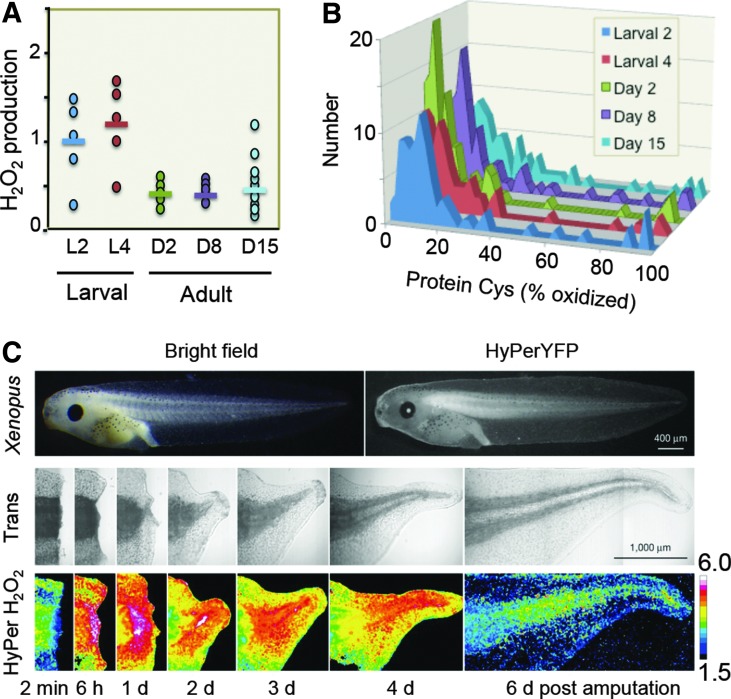FIG. 4.
Activation/deactivation cycles of H2O2 production support redox signaling and spatiotemporal organization of complex multicellular systems. (A) Redox imaging using HyPer reveals temporal sequence of H2O2 production in Caenorhabditis elegans development. Endogenous hydroperoxide levels during the life span of C. elegans were measured with HyPer ratios in the body wall muscle cells at different stages during their life span. Each symbol represents the HyPer ratio of an individual animal; the bar illustrates the average HyPer ratio per day. Experiments were performed a minimum of three times, and a representative graph shown here is redrawn from the original. One-way ANOVA, followed by the Tukey multiple comparison test, was performed on the log-transformed HyPer ratio and showed that the larval levels were different from the adult levels (p<0.05). Results were independently confirmed by Amplex UltraRed measurement of H2O2, which were also significantly different. (B) Protein Cys oxidation occurs in association with H2O2 production in C. elegans development. A complete list of proteins and standard deviations are given as an online supplement (http://dx.doi.org/10.1016/j.molcel.2012.06.016) to the original publication (58). (C) Redox imaging reveals the spatiotemporal sequence of H2O2 production in Xenopus laevis wound healing. Sequence of H2O2 production in tadpole tail regeneration is shown for days postamputation in the X. laevis line expressing HyPerYFP. The numbers give the excitation ratio of HyPerYFP490nm/HyPerYFP402nm, and the color scale reflects this ratio. (A, B) Modified from Knoefler et al. (58) and (C) from Love et al. (64), with permission from the publisher.

